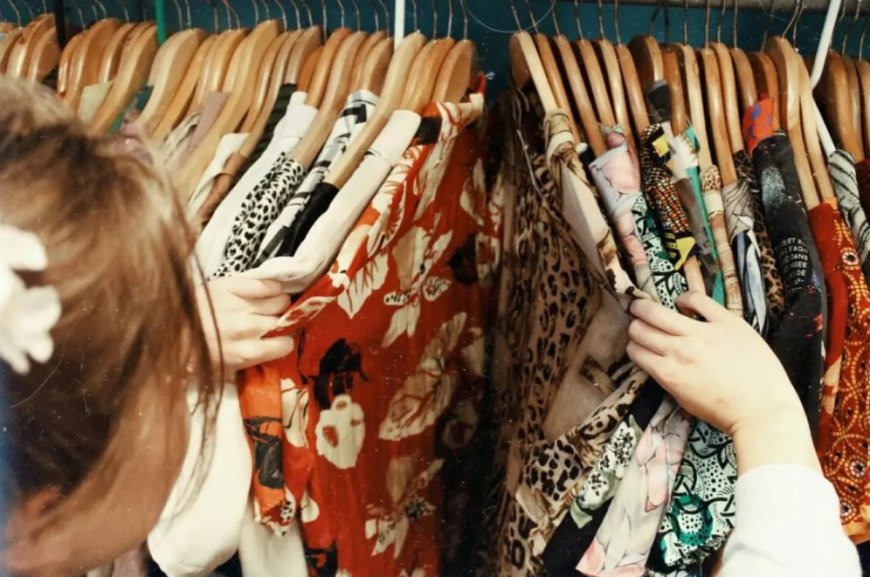How Technology Is Helping the Fashion Industry Advance in Inclusivity

The fashion industry has historically been criticized for its narrow definitions of beauty, body size, and gender. However, in recent years, technology has played a transformative role in helping fashion brands embrace inclusivity, ensuring that all individuals—regardless of size, shape, race, or gender—feel represented. As the world becomes more interconnected and socially conscious, the push for diversity and inclusivity in the clothing industry has gained momentum. Technology is enabling this shift in ways that were once unimaginable, reshaping how clothing is designed, produced, and marketed.
1. Virtual Fitting Rooms and Personalized Shopping
One of the most notable technological advancements in fashion is the development of virtual fitting rooms and augmented reality (AR). These innovations allow consumers to try on clothes virtually, eliminating the need for physical try-ons. Virtual fitting rooms use 3D scanning and AR to create an accurate representation of a person’s body, allowing them to see how different styles and sizes will look on them. This technology is particularly helpful for those with body types that are often excluded from traditional sizing charts.
Brands like ASOS and Zara have begun experimenting with virtual try-ons, providing a more personalized shopping experience for customers. By integrating size recommendations and custom-fit options, retailers can offer a more inclusive range of products, making it easier for shoppers of all shapes and sizes to find clothes that suit them. This democratizes fashion, offering a truly personalized experience that goes beyond the traditional one-size-fits-all approach.
2. Size Inclusivity Through Data and AI
Size inclusivity has long been a challenge in the clothing industry, with many brands offering limited size ranges. However, artificial intelligence (AI) is now helping brands create better-fitting clothing that accommodates a wider variety of body types. By analyzing customer data, AI can generate more accurate size charts, which take into account the diverse proportions of real people, not just standard models.
For example, brands like Savage X Fenty and Nike use AI-driven insights to expand their size offerings and create garments that fit a broader spectrum of bodies. Through this data-driven approach, the clothing industry can move away from traditional size labels and towards a more inclusive, fit-based model. This shift allows consumers to find clothes that flatter their body shape, no matter their size, and encourages other brands to adopt similar practices.
3. 3D Printing for Customization
Another exciting innovation in the fashion world is 3D printing, which offers unprecedented opportunities for customization. Using 3D printing technology, fashion designers can create garments tailored to individual measurements, eliminating the need for standardized sizes. This technology not only promotes body inclusivity but also enhances the customization of garments for people with unique needs.
For example, companies like Shapeways and Unmade are using 3D knitting and printing to produce customized fashion that fits perfectly and reflects personal style. This technology has the potential to revolutionize the clothing industry by offering truly bespoke products that cater to people of all shapes, sizes, and abilities, thus eliminating many of the inclusivity barriers traditionally present in fashion.
4. Social Media and Digital Representation
Social media platforms have had a huge impact on the inclusivity movement in fashion. With tools like Instagram, TikTok, and YouTube, individuals of all backgrounds are now able to create their own content, showcase their unique style, and challenge outdated beauty standards. Influencers from diverse communities are able to highlight brands that focus on size diversity, gender fluidity, and cultural representation, driving consumer demand for more inclusive products.
Brands are taking notice of this shift, with many now prioritizing digital representation in their marketing. Fashion campaigns are becoming more diverse, featuring models of all ethnicities, sizes, and gender identities. Social media, paired with the analytics of digital platforms, allows brands to engage with a wider, more diverse audience and gives consumers a voice in shaping what inclusivity looks like in fashion.
5. Sustainability and Ethical Fashion
Technology is also helping the clothing industry address sustainability and ethical production, which are often linked to inclusivity. Digital tools like blockchain are being used to track the environmental impact of clothing production, while 3D design software allows designers to create clothes more efficiently, reducing waste. These innovations are important because they ensure that fashion is accessible to all—not just in terms of size or representation, but also in terms of ethical sourcing and production.
With consumers increasingly seeking out sustainable and ethically produced items, brands that prioritize inclusivity, diversity, and ethical practices are more likely to succeed in today’s market. This emphasis on technology-driven sustainability creates a more equitable fashion landscape for both consumers and producers.
Conclusion
Technology is not just reshaping how we shop; it’s transforming how the fashion industry defines inclusivity. From virtual fitting rooms to AI-driven size recommendations, tech innovations are enabling brands to offer a more personalized and diverse shopping experience. By embracing technology, the clothing industry is opening doors to a more inclusive future, where people of all shapes, sizes, and identities can find clothes that make them feel seen and valued. As these technologies continue to evolve, they will undoubtedly play a key role in shaping a fashion world that is not only diverse but also more accessible, sustainable, and ethical for all.

 apparelview
apparelview